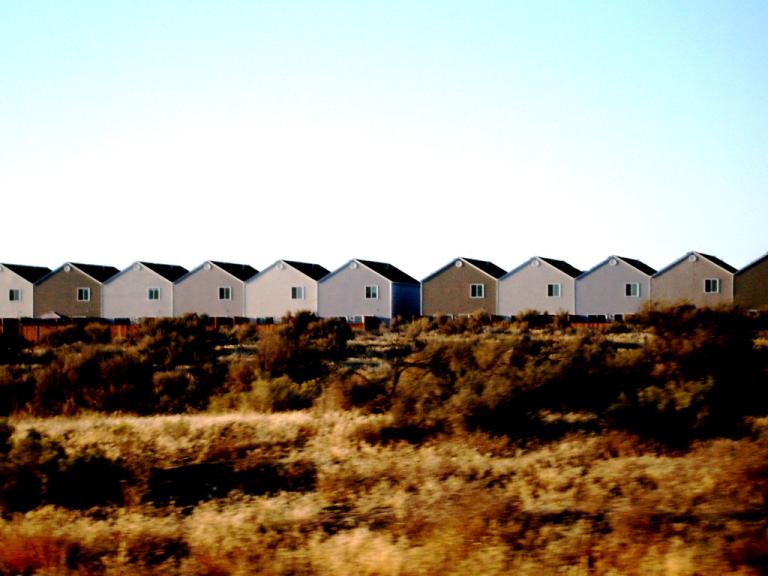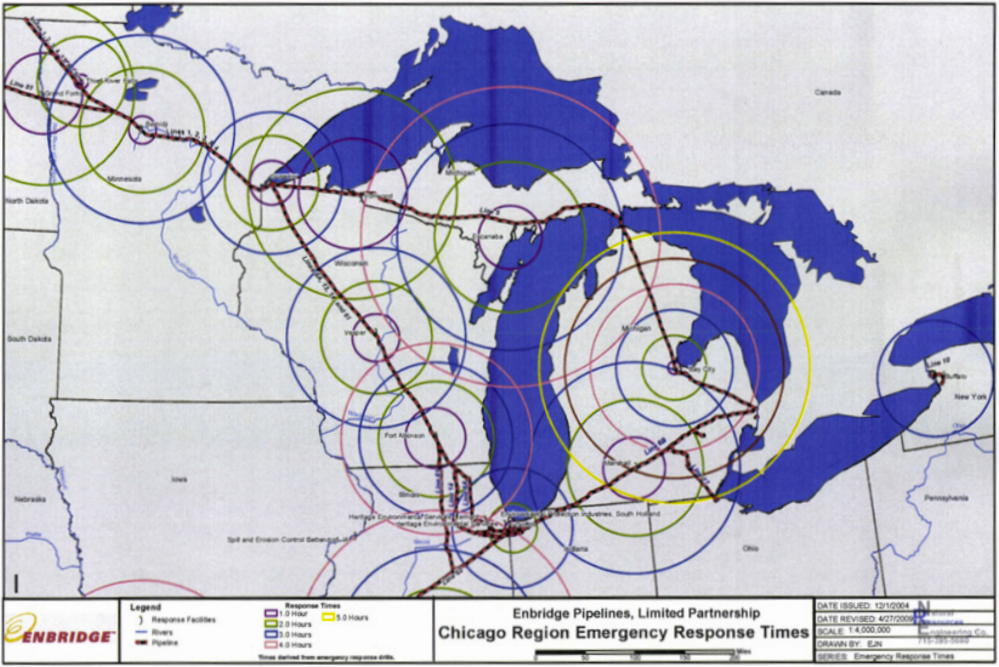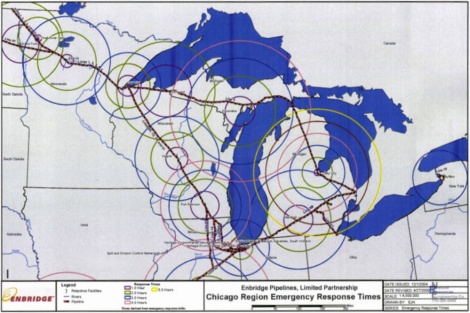This gap, where the Interstate 75 label is, is the Straits of Mackinac.
[protected-iframe id=”b2ffc20b4270f68b4fe35d3e39dfabfe-5104299-36375464″ info=”https://maps.google.com/maps?gl=us&ie=UTF8&t=m&ll=45.813486,-84.748535&spn=0.670025,1.290894&z=9&output=embed” width=”470″ height=”350″ frameborder=”0″ scrolling=”no”]
Zoom out. It’s an unassuming bit of water that plays a key role, separating Lake Michigan, at left, from Lake Huron, at right. Water from Lake Huron then flows into Lake Erie, then to Lake Ontario, then out the St. Lawrence Seaway to the Atlantic. The Great Lakes provide drinking water to 30 million people in the U.S. and Canada; the four lakes mentioned have over 8,000 miles of shoreline combined.
Interstate 75 isn’t the only thing that runs across the straits. There are also oil pipelines — pipelines run by Enbridge, the Canadian company responsible for the worst on-land oil spill in American history.
Earlier today, the National Wildlife Federation released Sunken Hazard [PDF], an assessment of the threat Enbridge’s Mackinac pipelines pose to the Great Lakes region. The overview is perhaps expectedly grim.
The Enbridge pipelines that cross the Straits of Mackinac have never spilled oil into the conjoined waters of lake Michigan and Huron, according to government officials. But evidence is mounting that there is reason to be concerned.
The Line 5 pipeline that crosses the Straits has a history of problems, just like the company that owns it. Pipelines deteriorate as they age, according to engineering experts, and the Line 5 pipes at the Straits have been subjected to fierce underwater currents, intense external pressure and varying water temperatures for nearly 60 years. Compounding the threat is the fact that the pipelines cross the world’s largest source of surface freshwater, a sensitive ecosystem that cannot readily cope with large quantities of crude oil.
Additionally, Enbridge has set out to expand its Lakehead System–which includes Line 5–to carry more diluted bitumen and tar sands oil from western Canada. All of the lines within the Lakehead System transport Alberta tar sands-derived crude oil. Most concerning is the transportation of diluted raw tar sands oil or diluted bitumen (DilBit). Transportation of this product requires higher operating pressures, which in turn heats the line and could pose significantly higher risks of spills.
Compounding concerns over the integrity of the pipelines is the remoteness of the location. Enbridge produced this map articulating the required response times for a spill along its pipelines. The Straits of Mackinac are at least three hours from any response center.
Enbridge could stop the flow of oil from a leak remotely — if it knew about it.
According to Enbridge Energy’s emergency response plans, it takes the company a minimum of eight minutes to shut down a ruptured pipeline and isolate the flow of oil from the leaking pipe. Enbridge has estimated that a “worst case” discharge for line 5, with the eight minute shut off, would be up to 1.5 million gallons of oil released. However, that is hardly worst case. Enbridge did not react to the Kalamazoo River spill for 17 hours despite warnings from their leak detection system, and instead had to be told about that release by a local utility.
The NWF describes how a spill of even a modest magnitude would affect the region: destruction of boreal forest, deaths of waterfowl, air pollution from released benzene.
The report is alarming but includes suggestions to better prepare for the worst-case it outlines. The suggestions are not inexpensive, to be sure, but as with so many things would be far less expensive for Enbridge than a major failure.
I wouldn’t hold my breath that the company will leap into action. Earlier this summer, the company’s CEO said this to a Canadian radio show:
[Critics are] coming after what they consider to be the weak link in the whole process, and that’s the infrastructure part of it.
These are not the words of a man interested in preventative maintenance.





